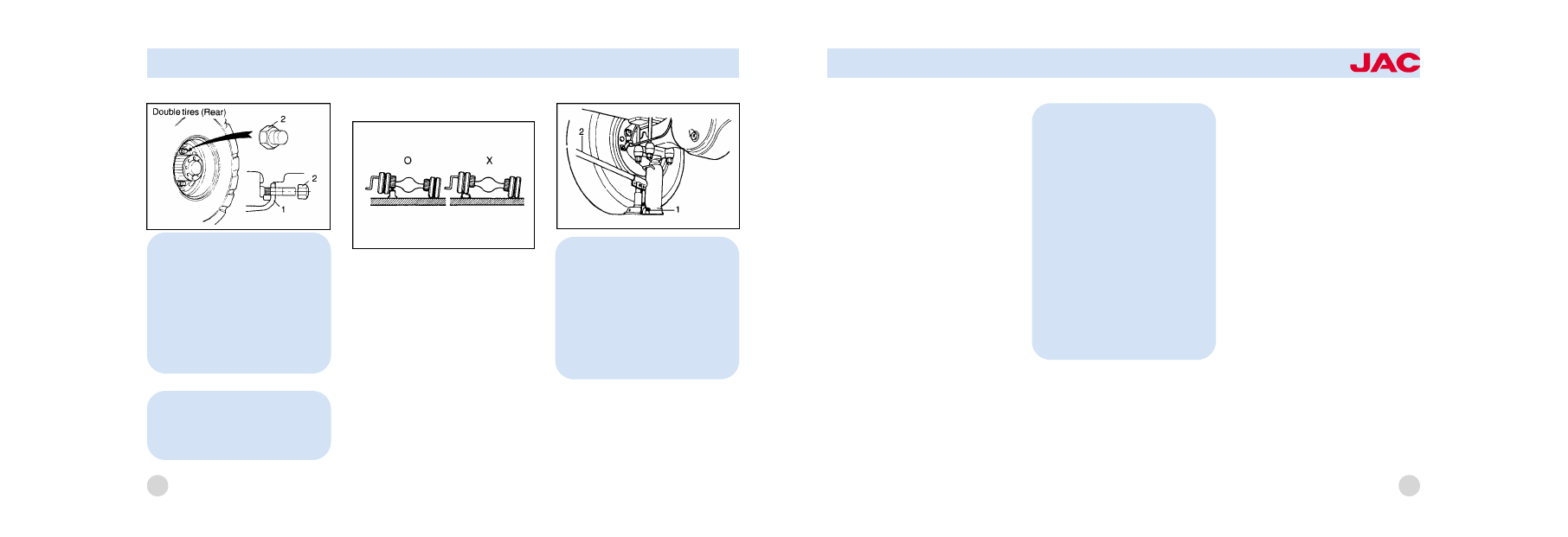Content .. 1340 1341 1342 1343 ..
Isuzu N-Series. Service manual - part 1342

CAUTION:
Be careful not to hurt yourself
when changing a flat tire.
JACK POSITION
The base of the jack should be
placed on firm, level ground.
The jack should be positioned as
shown in the drawing.
Raising the Car
Install the jack handle into the jack
as shown in drawing. To raise the
vehicle, close the valve 1 by turn鄄
ing it clockwise and move the jack
handle 2 up and down.
Changing Wheels
Use the wrench to loosen the
wheel nuts, then remove them with
your fingers. Remove the wheel,
74
NOTE:
Make sure that the rear outer
tires are raised on a jack when
they have to be replaced. Do
not attempt replacing the outer
tire with the inner tire placed on
a kerb stone.
WARNING:
Do not get under the car when
it is supported by the jack!
The vehicle could fall and
cause serious injury or death.
No one should stay in the car
while the jack is being used.
IN CASE OF EMERGENCY
slide the wheel off the studs and
lay it flat so it cannot roll way.
To re-installed the wheel, put the
wheel on the hub and put the
wheel nuts on the studs and tight鄄
en them finger tight.
Lower Vehicle and Tighten Nuts
To lower the car to the ground,
turn the valve 1 counterclockwise
by the jack handle.
Then position the wrench as shown
in the drawing and tighten the
wheel nuts.
荫 Wheel nut tightening torque:
8 studs wheel: 485 to 545 N.m (49
to 56 kg.m)
10 studs wheel :603 to 749 N.m(61
to 76 kg.m)
TIRE INFLATION PRESSURES
Low tire inflation pressures could
cause overheating and burst of the
tire. High tire inflation pressures,
on the other hand, will drastically
reduce tire life.
When tires were replaced, be sure
to adjust the tire inflation pressures
to the standard values.
荫 The standard tire inflation pres鄄
sure caution plate at the right side
of the driver's seat shows the max鄄
imum tire inflation pressures for
operation on the general road. To
extend ti re life, it is advisable that
the tires are adjusted to the infla鄄
tion pressures calculated from the
load.
Precautions for adjustment of tire
inflation pressures
荫 Adjustment should be made
while the tires are cold before op鄄
eration.
荫 In the case of double tires,
75
NOTE:
Wheel nut maintenance interval
1. After driving your vehicle dur鄄
ing first 1袁000 km , retighten
the wheel nuts with the speci鄄
fied torque.
2. And then, wheel nuts should
be checked or retightened for
every 5袁000 km or a month.
3. After replacing the tire, if you
drive your vehicle for 50 ~100
km, then the wheel nut should
be retightened.